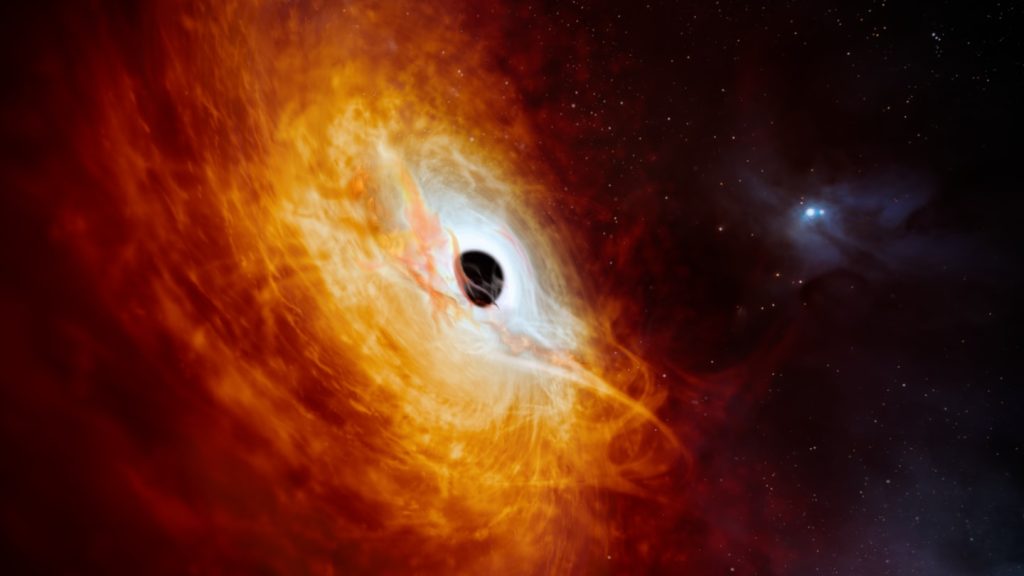One of the most distant known quasars appears to have halted the formation of new stars in all the galaxies near it. Quasars are luminous sources of light generated by hot gas revolving around a massive black hole at the center of a galaxy. The intense radiation from one particular quasar named VIK J2348-3054 has likely stopped star formation at a range extending at least 16 million light-years from itself, as reported by astronomer Trystan Lambert and colleagues in a forthcoming paper in Astronomy and Astrophysics.
The quasar being referred to is so far away that its light took 13.0 billion years to reach our planet, meaning it can be seen when the universe was a mere 770 million years old. Despite its extreme distance, the black hole fueling the quasar was already 2 billion times more massive than the sun by that early period. This indicates that the black hole consumed a substantial amount of material in a relatively short period, implying that the quasar’s galaxy must exist in a densely populated part of the universe, at the core of a large galaxy cluster where numerous galaxies should be actively creating new stars.
Surprisingly, despite expectations of an abundance of star-forming galaxies surrounding the quasar, Lambert’s team discovered the opposite. The discovery was made by searching a more extensive region around the quasar for star-forming galaxies compared to previous investigations. The researchers found that the quasar’s radiation is impacting nearby galaxies by heating up gas, preventing it from collapsing and forming new stars. They located 38 star-forming galaxies in the vicinity of quasar VIK J2348-3054 but noticed that no such galaxy was situated within 16.3 million light-years of the quasar, indicating a cessation of star formation in neighboring galaxies.
While more sensitive observations are warranted to bolster the significance of these findings, the absence of star-forming galaxies in the immediate vicinity of the quasars is a puzzling revelation. Further research is required to conclusively demonstrate that the quasar’s radiation is the cause of star formation suppression in nearby galaxies. Despite skepticism from some experts, ongoing advancements and refined observations may help establish a clearer connection between quasars and their influence on the star-forming capabilities of surrounding galaxies.
Interestingly, our own galaxy may have experienced similar effects from a quasar in the past. M87, a massive galaxy situated approximately 54 million light-years from the Milky Way, contains a colossal black hole that likely powered a quasar during the early stages of the universe. Although much closer at that time, the quasar’s impact on our galaxy’s star formation process could potentially be evidenced by analyzing detailed age estimates of the Milky Way’s oldest stars. A deeper understanding of the effects of quasars on the formation of stars in neighboring galaxies can provide crucial insights into the dynamics of the universe and its evolution over time.


